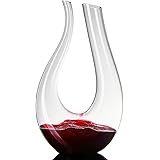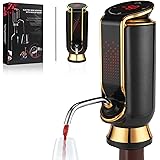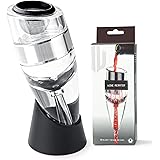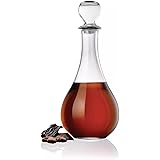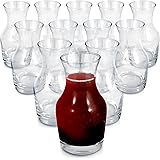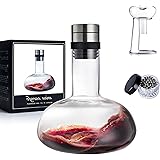Bordeaux Beyond the Grand Châteaux: Uncorking France’s Most Dynamic Wine Region
For centuries, the mere mention of Bordeaux has evoked images of unparalleled prestige, ancient châteaux, and wines reserved for the most discerning palates and hefty price tags. Indeed, Bordeaux has been the gold standard in winemaking, establishing a global reputation for excellence that remains unmatched in many respects. Yet, as our accompanying video highlights, this iconic French region is far more diverse, dynamic, and accessible than its traditional image suggests. If your perception of Bordeaux wine is solely rooted in your father’s prized collection, it’s time for a thrilling re-evaluation.
Beyond the legendary classified growths, a new generation of winemakers is crafting an astonishing array of Bordeaux wines in every conceivable style and price point. From vibrant sparkling rosés perfect for a weeknight dinner to serious whites, luscious dessert wines, and incredible reds that don’t break the bank, there’s a Bordeaux for every occasion. This article delves deeper into this rich tapestry, exploring Bordeaux’s storied past, its modern evolution, and how you can experience its multifaceted charm, whether through a bottle or a visit.
A Journey Through Time: The Enduring Legacy of Bordeaux Wine
The history of Bordeaux winemaking is as complex and layered as its finest vintages. Its favorable soil and strategic access to the Atlantic via the Garonne River made it ideal for viticulture as far back as the 1st century AD. This ancient heritage laid the groundwork for what would become one of the world’s most influential wine regions.
1. **The English Connection:** Bordeaux’s first major breakthrough arrived in the 12th century. A royal marriage cemented England’s ownership of Bordeaux for over 300 years, effectively making it England’s primary wine supplier. This prolonged relationship allowed Bordeaux wine to be widely imported and promoted across the globe, establishing its first international reputation.
2. **The Dutch Influence and the Médoc:** Fast forward to the 16th century, and the Dutch played a pivotal role in shaping Bordeaux’s landscape. Much of the region’s Left Bank was then unusable swamp and marshland. Applying their advanced engineering, the Dutch drained these areas, creating new land for viticulture and significantly improving transport routes for wine. This monumental effort led to the development of the Médoc, an area now synonymous with some of Bordeaux’s most famed and highly sought-after red wines.
3. **The Rise of the Châteaux:** By the late 1600s, the concept of specific châteaux gaining individual reputations began to emerge. Wine drinkers were no longer just asking for “Bordeaux wine”; they were requesting wines from their favorite producers. This shift marked the beginning of brand recognition in a way that profoundly influenced the region’s future.
4. **Defining Appellations:** The 1700s saw the formal drawing of boundaries for specific AOCs (Appellations d’Origine Contrôlée), or appellations. These regulations legally define geographical areas and production standards, ensuring quality and authenticity for Bordeaux wine. This meticulous approach to terroir, where place dictates product, is a hallmark of French winemaking.
Unraveling the Classifications: More Than Just the 1855 List
By the 1800s, Bordeaux was already well-known, but an event in 1855 propelled it onto the grand stage, forever changing its trajectory. Commissioned by Emperor Napoleon III for the Exposition Universelle in Paris, the 1855 Classification of Bordeaux wines was a seemingly small event with enormous, long-term ramifications. Based largely on the market price and reputation of the châteaux at the time, this list classified red wines from the Médoc (plus one from Graves, Château Haut-Brion) and sweet wines from Sauternes and Barsac into various growths (crus).
The 1855 classification created a hierarchy of producers, with many of the top “crus” becoming collector wines, sold at auction for thousands of dollars or even as “futures” before release. While these wines are undeniably exceptional, it’s crucial to understand that this classification is by no means a comprehensive list of all that Bordeaux has to offer. In fact, these classified growths represent a mere 2% of all Bordeaux wines.
Moreover, other classifications emerged over time:
- **Saint-Émilion Classification (1955):** Responding to the success of the 1855 list, the Right Bank’s Saint-Émilion region established its own classification, which is reviewed approximately every ten years.
- **Graves Classification (1953, revised 1959):** This classification focused on both red and white wines from the Graves region.
- **Modern Classifications:** The region has also seen the emergence of more dynamic, producer-made classifications like the Cru Bourgeois (for Médoc châteaux not on the 1855 list) and the Cru Artisan.
Then there are prestigious areas like Pomerol or Entre-deux-Mers, which have no classifications whatsoever, yet produce world-class wines. All these lists and appellations can seem intimidating at first glance, but as the video emphasizes, you don’t have to worry about them to enjoy great Bordeaux wine. Being on a list doesn’t guarantee quality, and being off a list certainly doesn’t imply a lack thereof.
The New Wave: Affordable Quality and Diverse Styles
Here’s the exciting truth about modern Bordeaux: it’s incredibly accessible. Unlike some regions where you need to spend a fortune to experience quality, really good Bordeaux wines can be found across all price points and in diverse styles. A staggering 90% of Bordeaux wine is sold for under $50 a bottle, debunking the myth that “Bordeaux” equates to “expensive.”
The sheer scale of production also contributes to its value. Bordeaux annually produces between 600 and 900 million bottles of wine. To put that in perspective, the entire Napa Valley produces around 120 million bottles per year. This massive output means a consistent supply of high-quality, affordable Bordeaux wine is readily available.
But it’s not just about value; it’s about variety. Despite its bold red wine reputation, Bordeaux offers a full spectrum:
- **Incredible Whites:** Think crisp, aromatic Sauvignon Blanc and Sémillon blends.
- **Vibrant Rosés:** Perfect for warm weather or casual dining.
- **Luscious Dessert Wines:** The sweet, complex wines of Sauternes and Barsac are world-renowned.
- **Sparkling Crémant de Bordeaux:** High-quality traditional method sparkling wines that offer excellent value.
This means whatever the time or place, a high-quality, affordable Bordeaux wine is ready to be discovered. The “new generation” of winemakers is experimenting with innovative techniques like biodynamics and aging in amphora, further diversifying the region’s offerings and ensuring there’s always something new to taste.
Experiencing Bordeaux: The City and Its Wine School
Bordeaux is not just a wine region; it’s also one of France’s most loved cities. Relaxed, laid-back, and incredibly livable, it’s often described as the “perfect big small town.” Despite feeling human-sized and friendly, as Scottish resident and wine expert Alex points out in the video, its surrounding wine country is enormous, stretching in every direction from the city center.
For wine lovers visiting Bordeaux, a must-stop is the L’École du Vin, the Bordeaux Wine School. Beyond offering a range of classes – from blending workshops and basic tasting classes to unique pairings like cheese and wine, or even chocolate and wine – it also houses a fantastic wine bar. This isn’t just any bar; it’s run by a non-profit organization, making many wines accessible at incredibly subsidized prices. As mentioned in the video, you can enjoy a glass of 2016 Pomerol for just eight euros, or a Crémant for a few euros, providing an unparalleled opportunity to sample diverse Bordeaux wines without breaking the bank.
Another essential destination for any wine enthusiast is the Cité du Vin. This futuristic wine museum offers an immersive, interactive journey through the history, culture, and civilizations of wine worldwide, not just Bordeaux. It’s a testament to Bordeaux’s commitment to wine education and appreciation on a global scale.
Getting There: Seamless Travel to France’s Wine Capital
Traveling to Bordeaux is a journey in itself, offering multiple options. While direct flights are available to Bordeaux-Mérignac Airport (BOD), many opt for the classic European approach: flying into Paris and taking a high-speed train. The journey from Paris to Bordeaux by bullet train takes a mere two hours, a stark contrast to the five and a half hours it would take to drive the 310 miles. This efficient rail link underscores Europe’s commitment to accessible and sustainable travel, making Bordeaux an easy extension to any Parisian adventure.
Bordeaux stands as a vibrant testament to the fact that tradition and innovation can coexist beautifully. It is a region that honors its rich history while embracing a future filled with diverse styles and approachable prices. So, whether you’re a seasoned connoisseur or a curious newcomer, the dynamic world of Bordeaux wine invites you to explore its many facets.


